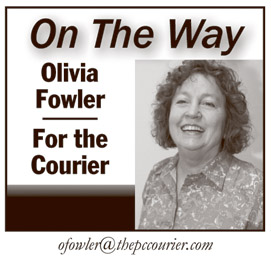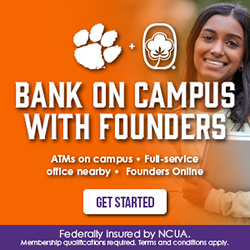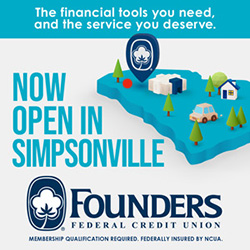Meeting Ancestors
The generations of Gwynns who lived on Gwynn’s Island were pretty self-sufficient. They farmed and depended on the sea for much of their livelihood. The only way for them to reach the mainland was by boat. The bricks forming the foundation of Hugh Gwynn’s home are still there, with the name Gwynn stamped into each brick.[cointent_lockedcontent]
 When we left the island, I felt a pang, saying goodbye to these people who were our people. We drove across the water and traveled from Matthews to Urbania, a small town on the bay famous for its oysters. Matt wanted Chesapeake Bay oysters, steamed, and I, as always, was on the hunt for crab. We reached Urbania after dark but found no place with a vacancy to stay. There were just a few bed and breakfasts and one motel, but we did enjoy an amazing meal in a small restaurant downtown. Matt got his oysters, and I had shrimp and grits. It was the best shrimp and grits dish I’d eaten since the Shrimp and Grits Festival on the coast of Georgia. The little cakes of fried grits were creamy and rich inside and crispy on the outside, and the shrimp was perfectly cooked. Not to mention the sauce.
When we left the island, I felt a pang, saying goodbye to these people who were our people. We drove across the water and traveled from Matthews to Urbania, a small town on the bay famous for its oysters. Matt wanted Chesapeake Bay oysters, steamed, and I, as always, was on the hunt for crab. We reached Urbania after dark but found no place with a vacancy to stay. There were just a few bed and breakfasts and one motel, but we did enjoy an amazing meal in a small restaurant downtown. Matt got his oysters, and I had shrimp and grits. It was the best shrimp and grits dish I’d eaten since the Shrimp and Grits Festival on the coast of Georgia. The little cakes of fried grits were creamy and rich inside and crispy on the outside, and the shrimp was perfectly cooked. Not to mention the sauce.
We headed back toward Gloucester after supper and stayed overnight there.
The next morning, we left early and went south, back toward Norfolk. We were headed for Cape Charles, where we lived as very small children.
The only way to get there from Norfolk is to drive through the Chesapeake Bay Tunnel. There are several sections of tunnel beneath the waters of the bay, which alternate with section of bridge. It really is an engineering marvel, covering about 28 miles of water. We knew our Daddy, who was an engineer, worked on the project many years ago. We weren’t sure we’d remember anything about Cape Charles, but once we made land we were surprised to find landscapes that felt familiar. It’s a rural peninsula with many fields of cotton, soy beans, corn and hay. There are about 3,000 people on the Cape, and they farm, fish and work at the concrete plant or the aquifer, which cultivates seed oysters for distribution.
I remember that our house was near Cherrystone Creek, where Mama took us crabbing. She put our tennis shoes on us before we waded out into the water, as the creek bed was covered with sharp oyster shells. I remember driving back to our house with a bushel basket full of crabs and watching Mama drop them into a huge pot of boiling water, then, when done, taking them out and dumping them onto the newspaper-covered table. We’d all sit there with our hammers and crack the shells open and pick out the meat. I remember the crab casserole she’d make and the melted, salted butter we’d dip the leg meat in.
We easily found Cherrystone Creek, which is beautiful, with old houses along the bank. It’s more than a mile wide in places. There were several flat-bottomed boats used for crabbing and stacks of crab traps in every yard. There were rushes and marsh in areas, and the sun lit the place like a picture. A print I’d framed years ago was almost a duplicate of the scene before me. That image had been stored in memory, and I was duplicating it without even knowing it.
Although we knew a railroad track was located near our old house, we still couldn’t find the house itself. We remembered it had a windmill in the backyard, but learned that all the windmills were gone as people now irrigated crops from a different water supply.
We drove into the town of Cape Charles. I didn’t remember the downtown, but did recognize the beach where Mama took us to swim. I have a blurry memory of a hot summer day on the beach circling the body of a giant sea turtle that had washed ashore. The turtle was larger than our dining room table, at least in my memory.
We both remembered riding the ferry across the bay to Norfolk when Mama bought our shoes. The ferry service no longer exists, but the ferry building and landing are still there. There’s a seafood shack in the building, and we ate lunch there.
Everything on the menu was caught in the bay surrounding us. Matt had fried oysters, and I had a crab cake that was pure lump meat, with no breading at all that I could see.
Our waitress, Becky, told us the elementary school Matt attended in first grade has finally been replaced. She taught there but left teaching as she could make double her salary waiting tables. She told us the summer tourist season helped sustain the economy all year. And then it was time to leave.
We strolled downtown and visited a couple of art galleries. Revisiting this place was a wonderful experience. It is little changed and felt familiar to us. When we left, I felt we’d come full circle. Although we didn’t find out everything we wanted to know, we did discover many things we didn’t know about our family. We’re hooked now and want to find out if there are family connections still alive. So that is the next part of our journey. I’ll never forget this trip with my brother, tracing the journey our ancestors took, which finally led to our very existence. Now that we know more about them, I feel as though we’ve also learned more about ourselves.
[/cointent_lockedcontent]


































